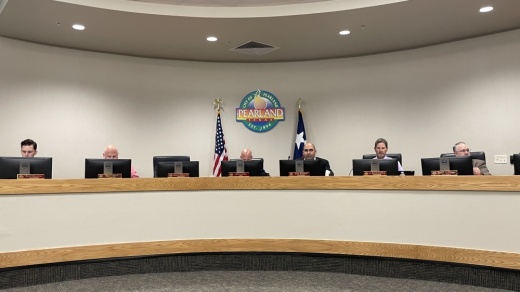Pearland City Council at its April 25 meeting unanimously approved an advanced funding agreement with the Texas Department of Transportation for $407,500 of costs associated with acquiring right of way and relocating or adjusting any utilities for the Broadway Street expansion.
“This is facilitating the city to get involved through [the Pearland Economic Development Corporation] to fund some of the elements of the project,” Pearland City Manager Clay Pearson said.
The city of Pearland will pay $407,500 specifically for right-of-way costs to TxDOT, which is broken down into $307,500 for right-of-way acquisition and 100,000 for any utility adjustments needed, according to agenda documents.
TxDOT is paying for roughly $4.08 million for right of way and utility adjustments as a part of the 90-10 cost share agreement between TxDOT and Pearland.
Additionally, the city of Pearland has entered into a reimbursement agreement with the PEDC that states the corporation will fund the $407,500 the city will pay to TxDOT, which can be paid to the city in installments or in a lump sum amount, according to agenda documents.
The construction, drainage, lighting, installation of traffic signals and 90% of right-of-way cost will be covered by TxDOT's $88 million project budget for phase 1, according to agenda documents.
Phase 1 of the Broadway Street expansion project will stretch from Hwy. 288 to Cullen Parkway and it will expand the current four-lane thoroughfare to a six-lane road with drainage and gutter improvements. Phase 2 of the project stretching from Cullen Parkway to Hwy. 35 is not yet funded for construction, according to TxDOT.
An in-person meeting on Phase 2 of the project will be held from 5:30-7:30 p.m. on April 28 at Berry Miller Junior High School at 3301 Manvel Road, Pearland, to discuss proposed changes, including reducing the right of way footprint, adjusting the roadway alignment and reducing the lane widths from 12 feet to 11 feet in order to accommodate the addition of an off-street bicycle and pedestrian facility, according to TxDOT.





